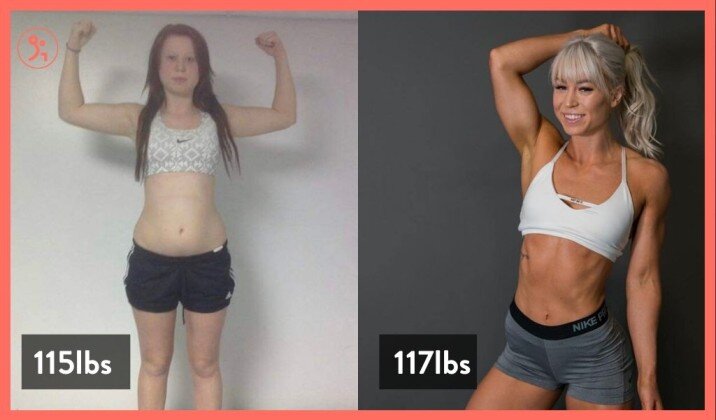Have you ever wondered if squats can help burn back fat? Well, you’re in the right place! Many people believe that squats are only for building strong legs and glutes, but they can actually provide a whole-body workout, including targeting your back. In this article, we’ll dive into the topic in detail and explain how squats can be beneficial for burning back fat. So, let’s get started and learn more about the power of squats!
When it comes to squats and back fat, it’s essential to understand that squats are a compound exercise that engages multiple muscle groups, including your back. While squats primarily target your legs and glutes, they also activate your core, back, and upper body muscles to maintain stability during the movement.
By incorporating squats into your workout routine, you can promote overall fat burning, including the back area. Additionally, squats can help improve your posture, which can contribute to reducing back fat. In this article, we’ll discuss the different variations of squats and how to properly perform them to maximize their benefits for burning back fat.
So, stay tuned and discover how squats can be a game-changer for your fitness journey!
What is back fat?
Before diving into the world of squats, let’s first discuss back fat and why it may be a concern for some individuals. Back fat, also known as bra bulge or love handles, refers to the excess fat that accumulates on the back, particularly in the upper and lower areas. It can be a result of various factors including genetics, poor diet, lack of exercise, and overall body composition.
Introduction to squats
What are squats?
Squats are versatile exercises that primarily target the muscles in your lower body, specifically the quadriceps, hamstrings, and glutes. They involve bending your knees and lowering your hips as if you are sitting back into an imaginary chair, then returning to a standing position. Squats can be performed using your body weight alone, or with added resistance such as dumbbells or barbells.
Benefits of doing squats
Squats offer a wide array of benefits beyond just targeting your back fat. They can improve lower body strength, increase muscle mass, enhance mobility and coordination, and boost overall calorie burn. By engaging multiple muscle groups simultaneously, squats can also stimulate your metabolism and promote fat loss.
Can squats target back fat?
Understanding spot reduction
Spot reduction refers to the idea that you can selectively burn fat from specific areas of your body by targeting those areas with exercise. Unfortunately, spot reduction is a myth. The body does not burn fat in a localized manner, but rather as a whole. This means that while squats can help burn calories and contribute to overall fat loss, they won’t specifically burn back fat.
Effectiveness of squats for back fat
While squats may not directly target back fat, they can indirectly help reduce it. By incorporating squats into your workout routine, you’ll be increasing your overall calorie burn and building lean muscle mass. This can lead to a decrease in body fat percentage, including the fat stored in your back area. Additionally, squats engage your core muscles, which can help improve your posture and create a more toned appearance in your back region.

Factors influencing back fat
Diet and nutrition
Diet plays a significant role in fat loss, including back fat. To effectively reduce back fat, it’s important to maintain a balanced diet that is high in nutrient-rich foods such as fruits, vegetables, lean proteins, and whole grains. Avoiding processed foods, sugary drinks, and excessive calorie consumption can also contribute to overall weight loss and a reduction in back fat.
Genetics and body composition
Genetics and body composition can influence how and where your body stores fat. Some individuals may be more prone to accumulating fat in the back region due to their genetic predisposition. However, it’s essential to remember that everyone’s body is unique, and with consistent exercise and a healthy lifestyle, it is possible to achieve significant fat loss in any area, including the back.
Overall workout routine
Incorporating squats alone into your workout routine may not be enough to see significant results in reducing back fat. While squats provide numerous benefits, it’s crucial to have a well-rounded exercise program that includes a combination of cardiovascular exercises, strength training, and targeted back exercises. This comprehensive approach will help maximize fat loss and muscle toning throughout your entire body.
Proper squat technique
Correct form for squats
To get the most out of your squats and minimize the risk of injury, it’s important to focus on proper form. Here’s a step-by-step guide to performing squats correctly:
- Stand with your feet hip-width apart, toes slightly turned out.
- Engage your core muscles and keep your back straight.
- Begin the squat by bending your knees and lowering your hips while keeping your weight centered on your heels.
- Lower yourself until your thighs are parallel to the ground, or as low as your flexibility allows.
- Push through your heels and return to a standing position, squeezing your glutes at the top of the movement.
- Repeat for the desired number of repetitions.
Avoiding common mistakes
When performing squats, it’s crucial to avoid common mistakes that can compromise your form and reduce the effectiveness of the exercise. Some common mistakes include:
- Allowing your knees to cave inward.
- Leaning too far forward or rounding your back.
- Failing to engage your core muscles.
- Not reaching an adequate depth in your squat.
- Letting your heels lift off the ground.
- Using excessive weight without proper strength and technique.
By being mindful of these mistakes and practicing proper form, you can maximize the benefits of squats and reduce the risk of injury.
Other exercises for back fat
Cardio exercises for overall fat loss
While squats can contribute to overall fat loss, incorporating cardiovascular exercises into your routine can further enhance your results. Activities such as running, swimming, cycling, and HIIT (high-intensity interval training) can increase your heart rate and burn more calories, leading to greater fat loss throughout your body, including your back.
Strength training exercises targeting back muscles
In addition to squats, there are other exercises specifically targeting the back muscles that can help reduce back fat and promote overall muscle toning. These exercises include:
- Lat pulldowns
- Bent over rows
- Back extensions
- Pull-ups/chin-ups
- Reverse flyes
Incorporating a variety of these exercises into your routine can help strengthen and sculpt your back muscles, ultimately leading to a more defined and toned appearance.
Tips for incorporating squats into your fitness routine
Gradual progression
If you’re new to squats or have limited experience with strength training, it’s essential to start gradually and progress at a comfortable pace. Begin with bodyweight squats and focus on perfecting your form before adding additional weight. As your strength and technique improve, you can gradually increase the resistance by using dumbbells or a barbell.
Safety precautions
To ensure your safety during squats, consider the following precautions:
- Warm up properly before engaging in any exercise.
- Listen to your body and stop if you experience any pain or discomfort.
- Use a mirror or ask a trainer to check your form and provide feedback.
- Don’t push yourself too hard or lift excessive weight beyond your abilities.
- Invest in proper footwear that offers stability and support for your ankles and feet.

Balancing exercise and diet
Importance of a balanced approach
While incorporating squats and other exercises into your routine can be beneficial for reducing back fat, it’s crucial to remember that exercise alone is not enough. A balanced approach that combines regular physical activity with a healthy diet is key to achieving long-term fat loss. Creating a calorie deficit by consuming fewer calories than you burn through exercise and daily activities is essential for overall weight loss and reduction of back fat.
Choosing nutrient-rich foods
In addition to monitoring your calorie intake, focus on consuming nutrient-rich foods that support your overall health and well-being. Incorporate a wide variety of fruits, vegetables, lean proteins, whole grains, and healthy fats into your diet. These foods provide essential nutrients, vitamins, and minerals that can boost your metabolism, increase satiety, and support your weight loss efforts.
Tracking progress and staying motivated
Setting realistic goals
To stay motivated on your journey to burn back fat, it’s important to set realistic goals. Monitor your progress by taking measurements, tracking changes in body composition, or documenting your physical performance. Celebrate small milestones along the way, such as increased strength, improved endurance, or fitting into smaller clothing sizes. Remember that sustainable fat loss takes time and consistency, so be patient with yourself and stay committed to your goals.
Conclusion
While squats alone may not specifically target back fat, they can contribute to overall weight loss and muscle toning. Incorporating squats into your fitness routine, along with a balanced diet and other exercises targeting the back muscles, can help you achieve a more toned and defined appearance.
Remember to focus on proper form, gradually progress in your exercises, and listen to your body. By maintaining a balanced approach and staying consistent, you can effectively burn back fat and achieve your desired fitness goals.




